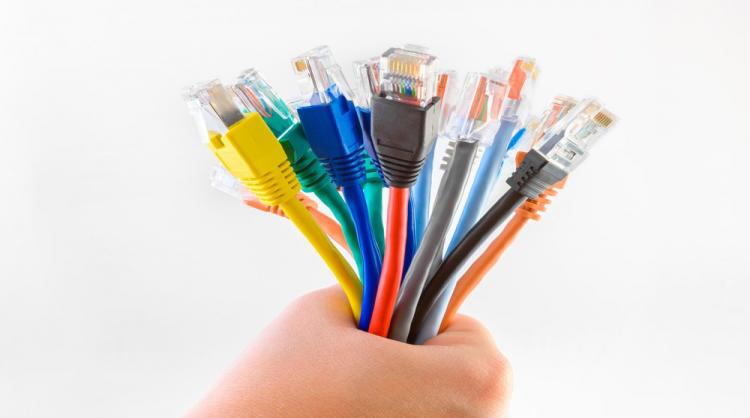CLECs Seek Elimination of “Unwarranted” ILEC Special Construction Charges
October 16, 2015 | by Andrew Regitsky

One of least publicized competitive hurdles CLECs continue to face is the ability of ILEC’s to levy special construction charges on new copper time-division multiplexed (TDM) services or replacement packet-based Ethernet services. CLECs view many of these charges as excessive and unwarranted and as an excuse to increase their prices.
For example, in an April 22, 2015 meeting with the FCC, XO stated that,
Verizon has been greatly increasing the frequency of special construction charges for its Ethernet services and, based on fourth quarter 2014 numbers, the percentage of cases where special construction is imposed is more than 80 times higher for Verizon than AT&T. Moreover, XO explained that, over the past several years, the incidence of Verizon special construction charges for TDM special access service orders has been substantially higher than in the period prior to 2012, when special construction charges were very rarely imposed by Verizon. Further, XO noted that the incidence of special construction for TDM services in the case of Verizon is markedly higher than for AT&T. XO described some of the situations where Verizon seeks to impose special construction charges and that XO believes are inconsistent with the Verizon tariff. For example, in response to XO orders for DS1 special access at certain locations where copper is not exhausted, Verizon has informed XO that fulfilling the orders will require special construction charges because the building is converting to fiber-based service or will be FiOS-only going forward. Similarly, XO noted that Verizon, on some occasions where XO seeks to access new buildings, has purported to justify its special construction charges for TDM services on the basis that Verizon is only offering FiOS to such buildings. Through imposition of special construction charges in these and other situations not permitted under its tariffs, Verizon is improperly shifting its fiber construction costs to XO and raising its rates for DS1 and DS3 services (CompTel April 23, 2015 letter to FCC, Docket 13-5, at pp. 1-2).
A few CLECs such as CompTel, WindStream and XO have been arguing for several months for the FCC to take action against these excessive charges, so far with little success. They assert that a CLEC customer should not be assessed lawful special construction charges simply because existing facilities are fully utilized and additional facilities are necessary. Moreover, they claim that special construction charges cannot be assessed when the facility in question is fungible and could be used to provide services to other long term customers.
CLECs have coalesced around several basic principles proposed by CompTel which would ensure that when they order TDM or packet services, ILECs would be permitted to assess special construction charges for network build-outs only where both of the following two conditions are met:
1. Existing ILEC facilities, even with routine maintenance and conditioning, do not have capacity available at or above the level requested by the CLEC - Where (i) an ILEC theoretically could use copper to meet a wholesale request, but the ILEC has tested and found that no spare copper loop facilities would be capable of fulfilling the CLEC’s order, even with routine maintenance and conditioning (e.g., removal of bridge taps and loading coils), (ii) the ILEC does not have fiber connecting to the relevant location, and (iii) condition (2) below regarding no ILEC use is also met, the ILEC could impose special construction charges. Similarly, where a CLEC requests services that require fiber and the ILEC does not have fiber already connected to the relevant location, the ILEC could impose special construction charges if condition (2) below also is met.
2. The ILEC’s special construction charges do not address costs of network delivery infrastructure that the ILEC will use for its own operations - The ILEC could impose special construction charges where it must deploy new network delivery infrastructure (e.g., conduit, subduct, buried, aerial infrastructure) to fulfill the CLEC’s request, and the ILEC certifies that it will not use the infrastructure—including the supporting infrastructure such as conduit or poles—for any of its or its affiliates’ retail services in the future (CompTel May 27, 2015 letter to FCC, Docket 13-5, at pp. 2-3).
Unfortunately, for CLECs, there is simply no indication that the FCC is prepared to take any action to deal with any aspect of special access or Ethernet until the special access investigation is completed likely late next year. The best bet for CLECs is to utilize the Commission’s requirement in the Technology Transitions Order that ILECs must provide reasonably comparable wholesale replacement fiber services for DS1 and DS3 TDM services that are replaced or retired. CLECs should make the case that for such replacement services, special construction could never be warranted to be reasonably comparable.
For brand new special access or Ethernet service orders, however, CLECs are almost certainly going to have to continue to make their arguments against special construction charges on a case-by-case basis, with little hope of Commission intervention.
By Andy Regitsky, CCMI

